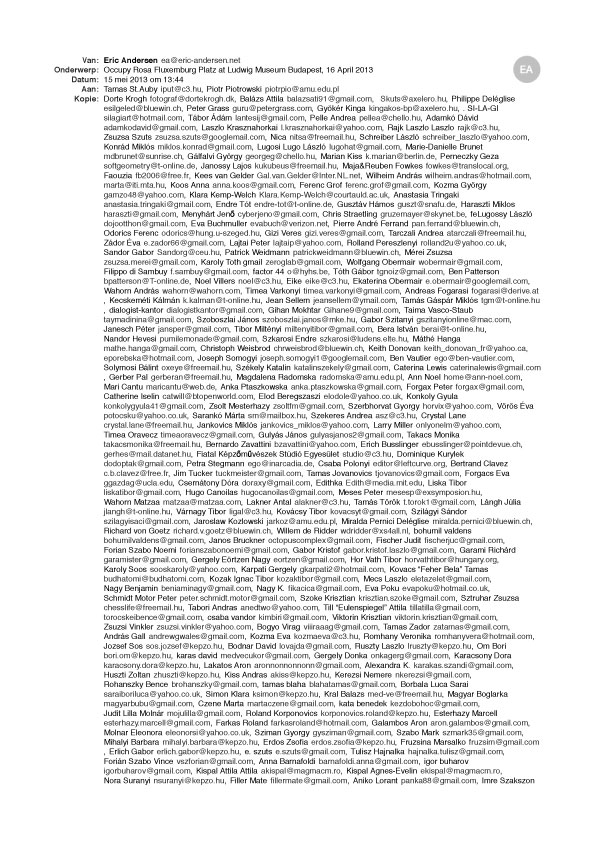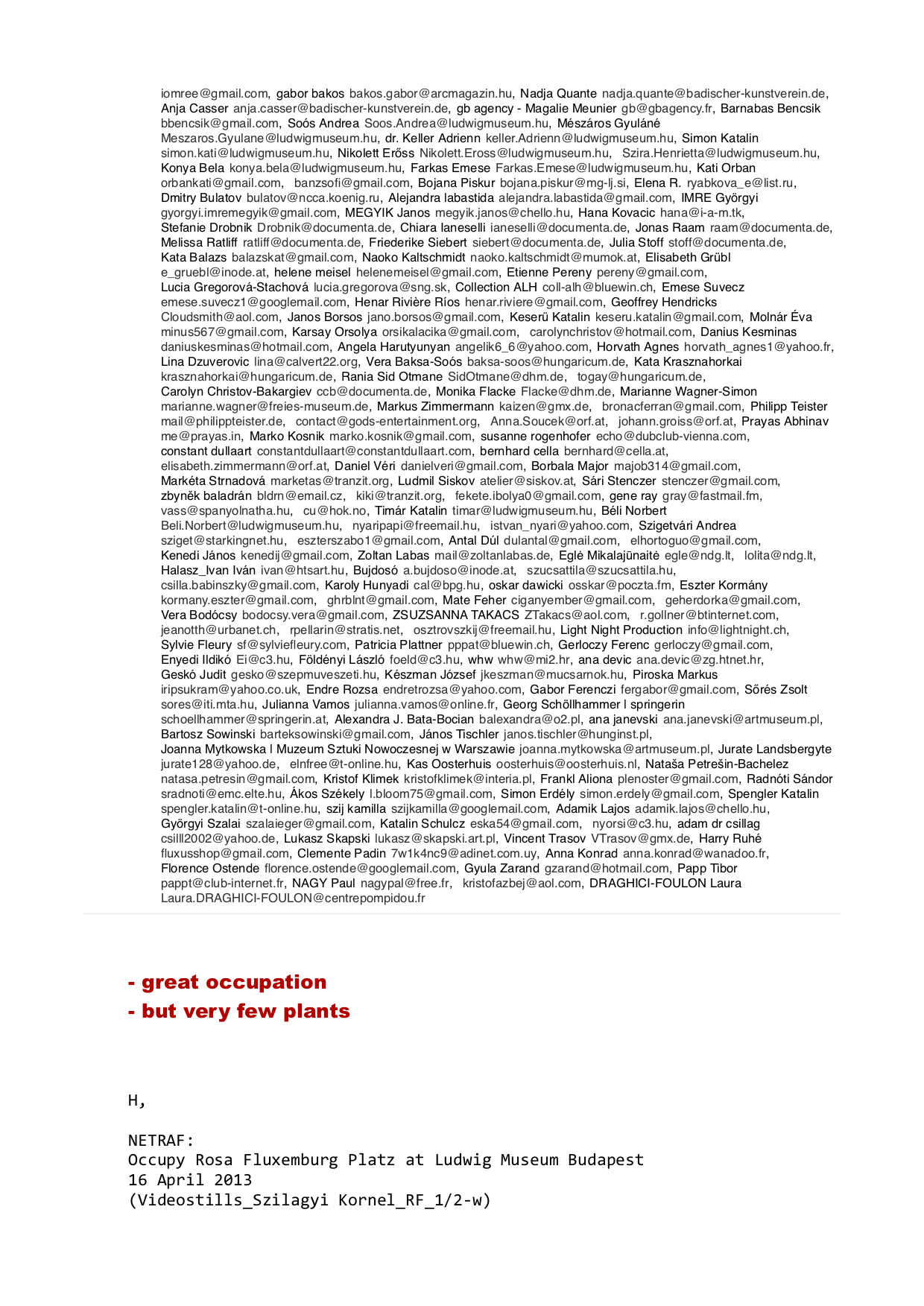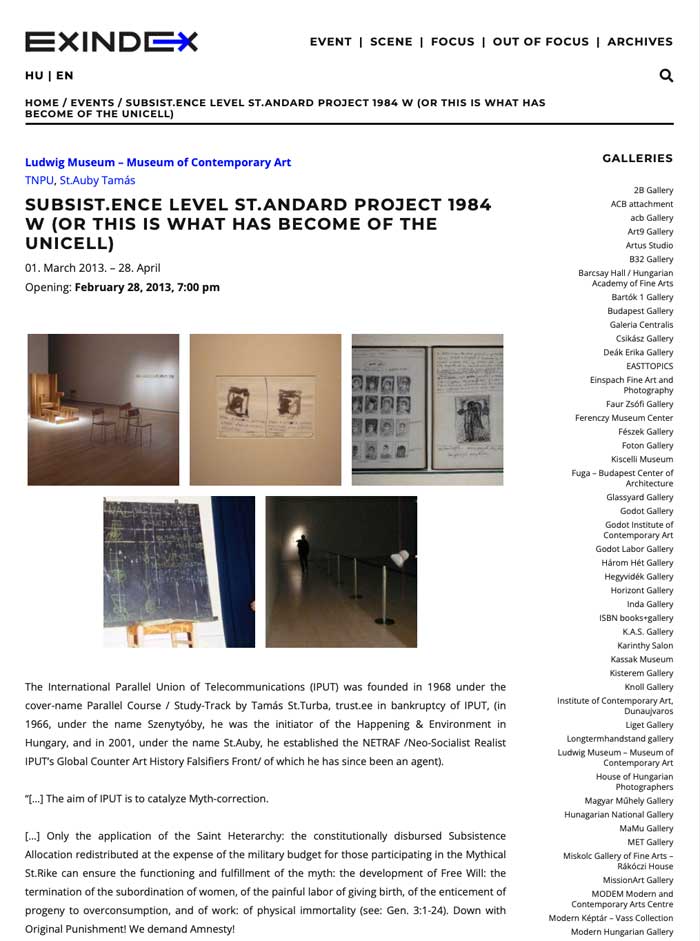
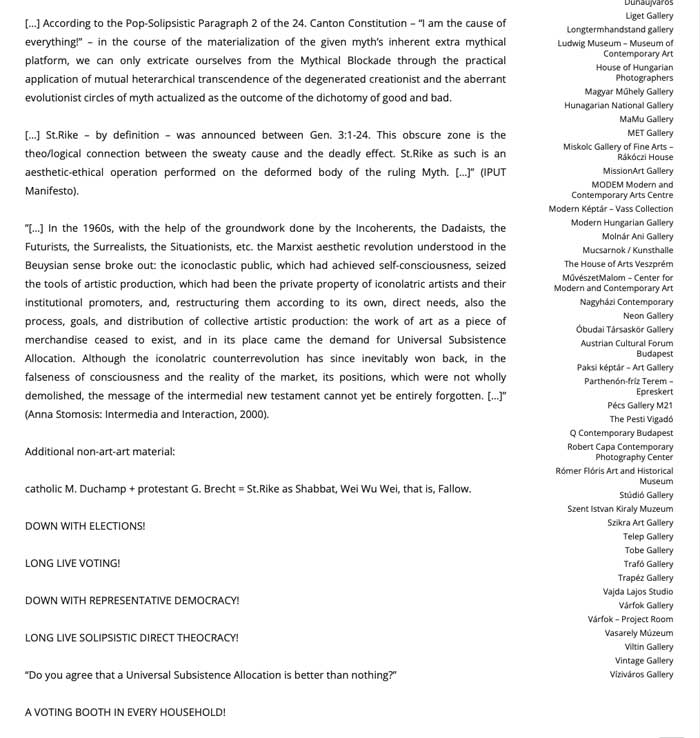
TAMÁS ST.AUBY, SUBSIST.ENCE LEVEL ST.ANDARD Project 1984, 2013
29,7 x 21 cm
2 prints (screen shots website ExIndex)
inv.DTan 000
One of the most unknown-known Hungarian artists is Tamás St. Auby (ps. of Tamás Szentjóby, born in 1944) being a non-artist, poet and performer, both inside and outside of the arts. He founded IPUT / ‘International Parallel Union of Telecommunications’ in 1968. Its central idea: “The art is hokum. The history is hokum. Art is everything, what not allowed. Be not allowed!” He had to leave Hungry in 1975, and he came back not earlier than in 1991.
When I met Tamás St. Auby for the first time in his studio in 2004, I was quite impressed by his for me scary shamanistic dominance in his social interaction. Yet his presence was deeply lived through and sensitive. His attitude was not one of being an artist in the first place but more one of a teacher of an academy in Budapest. At once it was clear to me that I wanted to invite him to participate in ‘Freedom Borders’, a group exhibition with Hungarian artists I curated in Galerie van Gelder, Amsterdam in 2004. The other two artists were Szabolcs KissPàl and visual poet and writer Dezsö Tandori.
Part of installation in ‘Freedom Borders’ at Galerie van Gelder, 2004
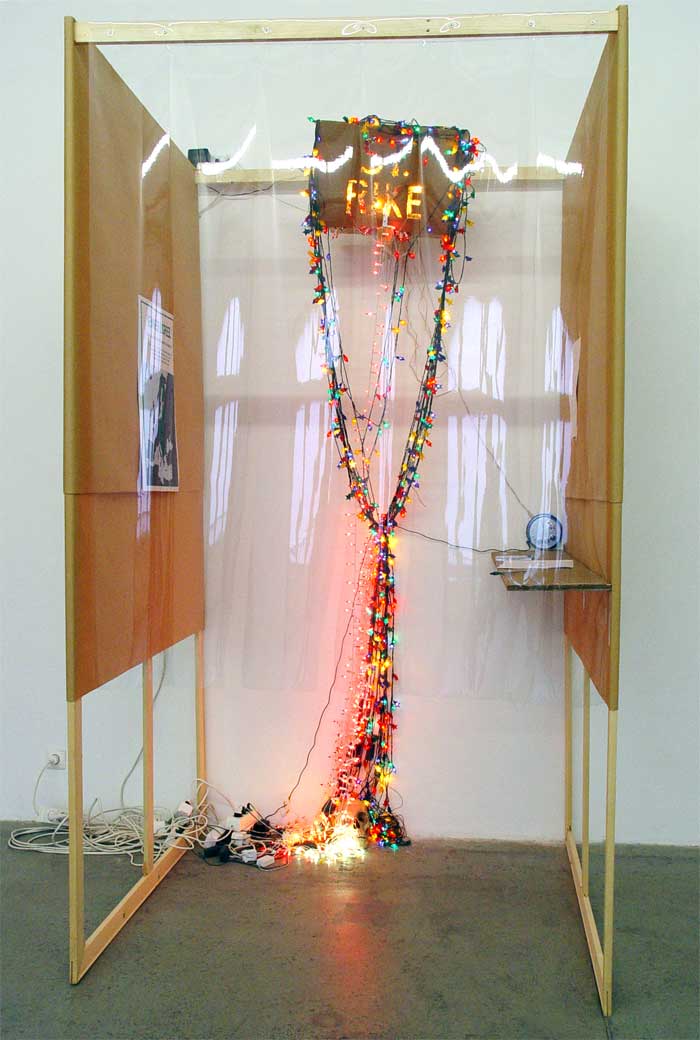
Foto K. van Gelder, Amsterdam
TAMÁS ST. AUBY, Ballot-Disco, 2004
250 x 140 x 140 cm
wood, voting bills, pen, walk-man/sound, map, light, human skull, plastic curtain, cardboard box

